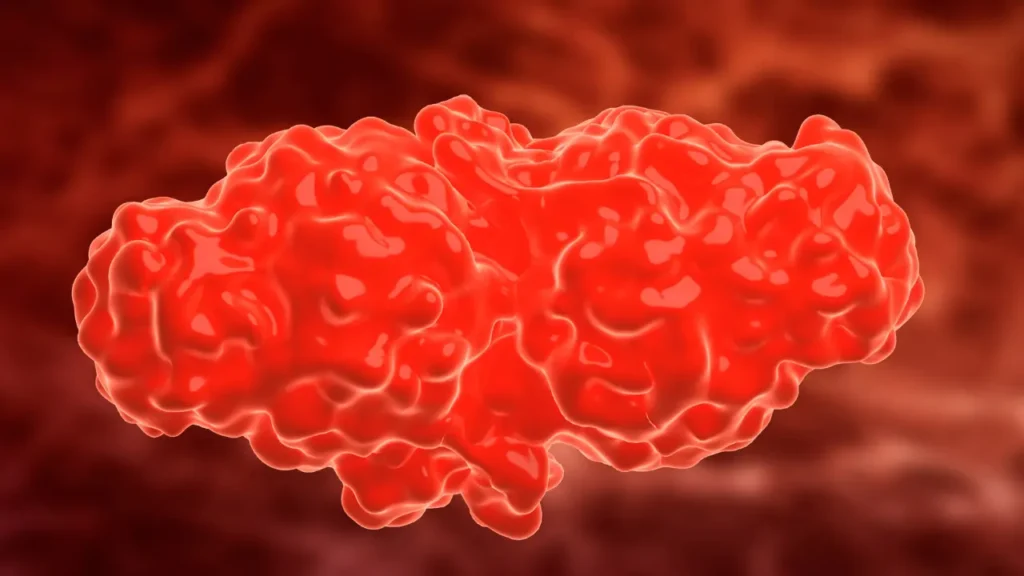Alpha-linolenic acid (ALA) is an essential omega-3 fatty acid that is gaining popularity due to its numerous health advantages. Because ALA is an essential nutrient, the human body cannot synthesize it, hence it must be obtained by diet or supplementation. This page dives into the chemical makeup of ALA, its physiological effects, potential adverse effects, substance interactions, and the best practices for safe use.
You May Also Like:
Five Great Reasons to Try a Nootropic Mushroom Supplement
The Best Mushroom Supplements for Memory: 5 Top Brands Reviewed
ALPHA-LINOLENIC ACID: Benefits, Dosage, Side Effects, Drug Interactions, and Other Important Information is an original (NootropicsPlanet) article.
Nature of Alpha-Linolenic Acid
Alpha-linolenic acid (ALA) is a naturally occurring omega-3 fatty acid found primarily in plants. Nature’s chief sources of ALA include:
- Flaxseeds, chia seeds, and hemp seeds are excellent sources of ALA. They can be eaten whole, crushed, or in the form of oil derived from the seeds.
- Nuts: Walnuts are a good source of ALA, but almonds and hazelnuts also have small quantities.
- Vegetable Oils: ALA is abundant in canola, soybean, and flaxseed oils. They can be cooked with or used as a foundation for salad dressings.
Health Benefits of Alpha-Linolenic Acid
- Cardiovascular Health: Higher ALA intake has been associated with a lower risk of cardiovascular disease. ALA decreases inflammation, blood pressure, and endothelial function, lowering the risk of atherosclerosis. Eicosapentaenoic acid (EPA) and ocosahexaenoic acid (DHA) which are generated from ALA, also contribute to a healthy blood lipid profile by lowering triglyceride levels and boosting HDL cholesterol levels.
- Brain Health: Adequate ALA consumption is critical for good brain function, as DHA accounts for 30-40% of total fatty acids in the brain. DHA promotes neuronal membrane fluidity, synaptic transmission, and neurogenesis, all of which have an effect on cognitive ability and memory.
- Anti-inflammatory Effects: ALA and its metabolites have the ability to influence inflammatory responses by influencing the generation of inflammatory mediators such as cytokines and eicosanoids. Individuals suffering from chronic inflammatory disorders such as rheumatoid arthritis may benefit from this impact.
- Mental Health: Research has shown that omega-3 fatty acids, especially ALA, can boost mood and reduce depression symptoms. The underlying mechanism may involve neurotransmitter synthesis regulation, such as serotonin and dopamine, as well as neuroinflammation modulation.

Chemistry of Alpha-Linolenic Acid
ALA is a polyunsaturated fatty acid containing 18 carbons and three cis-double bonds at positions 9, 12, and 15, designated as 18:3(n-3). The n-3 or omega-3 label denotes the presence of the first double bond in the fatty acid chain at the third carbon atom from the methyl end. The carbon atoms in the center are linked by single and double bonds and have a carboxyl group (-COOH) at one end and a methyl group (-CH3) at the other.
Physiological Mechanisms of Alpha-Linolenic Acid
The conversion of ALA into longer-chain omega-3 fatty acids, notably eicosapentaenoic acid (EPA) and docosahexaenoic acid (DHA), is thought to be responsible for its biological benefits. The procedure begins with 6-desaturase, an enzyme that adds a double bond to ALA and converts it to stearidonic acid (SDA). Following that, the elongase enzyme stretches SDA to generate eicosatetraenoic acid (ETA), which is then converted into EPA by 5-desaturase. Finally, further elongation and desaturation produce DHA.
As previously mentioned, EPA and DHA are key components of cell membranes and play important roles in cellular function, especially in the brain and retina. They influence the synthesis of eicosanoids such as prostaglandins, thromboxanes, and leukotrienes, all of which play important roles in inflammation, blood clotting, and immunological responses.


Optimal Dosage of Alpha-Linolenic Acid
The recommended ALA dosage varies according to age, gender, and health circumstances. The National Academy of Medicine recommends 1.6 gm of ALA per day for men and 1.1 gm for women. Women who are pregnant or nursing may require greater doses of 1.4 and 1.3 gm per day, respectively. ALA is found in foods such as flaxseeds, chia seeds, walnuts, and some vegetable oils such as soybean and canola oil. When dietary consumption is insufficient, ALA supplements in the form of capsules, oils, or soft gels are available. To establish the right dosage depending on individual needs, speak with a healthcare expert.
Side Effects of Alpha-Linolenic Acid
When ingested in moderation through diet or supplements, ALA is generally regarded as safe. Excessive consumption, on the other hand, may result in gastrointestinal upset, such as diarrhea, bloating, and abdominal pain. Furthermore, high ALA doses may raise the risk of bleeding in people with blood coagulation issues or who take anticoagulant drugs.


Potential Substance Interactions with Alpha-Linolenic Acid
- Anticoagulants and antiplatelet drugs: ALA may increase the risk of bleeding by limiting the effects of anticoagulants and antiplatelet medications such as warfarin, aspirin, and clopidogrel. If you are on these medications, you should talk to your doctor before taking ALA supplements.
- Blood Pressure Medications: Omega-3 fatty acids, such as ALA, have been shown to reduce blood pressure. When ALA supplements are combined with blood pressure-lowering drugs, blood pressure may drop too low, resulting in hypotension.
- Diabetic drugs: ALA has been shown to lower blood sugar levels, potentially improving the effects of diabetic drugs and raising the risk of hypoglycemia. When using ALA, it is critical to monitor blood sugar levels and alter medicine doses as needed.
Best Responsible Uses of Alpha-Linolenic Acid
Given the health benefits of ALA, it is critical to obtain enough consumption via food or supplementation. The following are some responsible ALA usage practices:
- Before beginning ALA supplementation, consult with a healthcare practitioner, especially if you have an underlying health condition or are using drugs that may interact with ALA.
- To assure purity and potency, use high-quality ALA supplements from renowned producers.
- Begin with a modest dose of ALA and gradually increase the dosage to the recommended daily intake to reduce the possibility of negative effects.
- Keep a close eye on your health and any changes in your symptoms while using ALA supplements. Regular check-ups with a healthcare practitioner can aid in determining the efficacy of the treatment.
ALPHA-LINOLENIC ACID:
Conclusion
In summary, Alpha-linolenic acid (ALA)is a noteworthy compound that plays a crucial role in supporting cardiovascular health and maintaining proper brain function. Examples of sources rich in ALA are flaxseeds, chia seeds, and walnuts, etc. From the preceding paragraphs, it is safe to conclude that ALA can contribute to a balanced diet as a dietary supplement and can be valuable in promoting overall well-being.
If you are looking for ways to lower your blood pressure and have a healthy blood lipid profile, make sure to check out ALA supplements. However, please consult with your family doctor before incorporating this supplement into your daily routine. You would also need to purchase these supplements from reputable sources to ensure your safety and wellness.


References:
- The Review of Alpha-Linolenic Acid: Sources, Metabolism, And Pharmacology. Retrieved from: https://pubmed.ncbi.nlm.nih.gov/34553434/
- Α-Linolenic Acid: Nutraceutical, Pharmacological and Toxicological Evaluation. Retrieved from: https://pubmed.ncbi.nlm.nih.gov/24859185/
- Health Benefits of Plant-Derived Α-Linolenic Acid. Retrieved from: https://pubmed.ncbi.nlm.nih.gov/24898228/
Important Note: The information contained in this article is for general informational purposes only, and should not be construed as health or medical advice, nor is it intended to diagnose, prevent, treat, or cure any disease or health condition. Before embarking on any diet, fitness regimen, or program of nutritional supplementation, it is advisable to consult your healthcare professional in order to determine its safety and probable efficacy in terms of your individual state of health.
Regarding Nutritional Supplements Or Other Non-Prescription Health Products: If any nutritional supplements or other non-prescription health products are mentioned in the foregoing article, any claims or statements made about them have not been evaluated by the U.S. Food and Drug Administration, and such nutritional supplements or other health products are not intended to diagnose, treat, cure, or prevent any disease.
